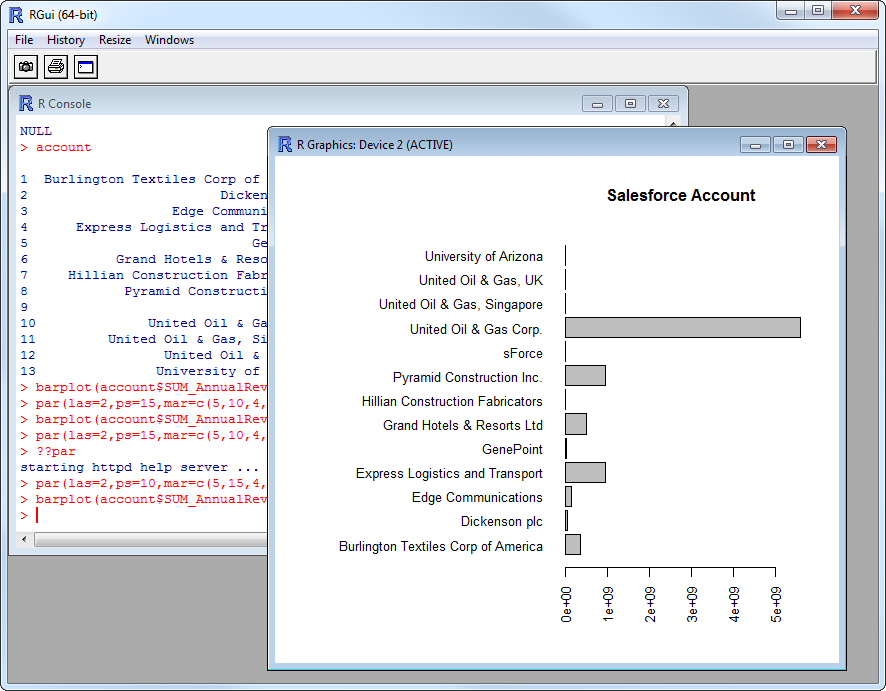Model Context Protocol (MCP) finally gives AI models a way to access the business data needed to make them really useful at work. CData MCP Servers have the depth and performance to make sure AI has access to all of the answers.
Try them now for free →Analyze WooCommerce Data in R
Use standard R functions and the development environment of your choice to analyze WooCommerce data with the CData JDBC Driver for WooCommerce.
Access WooCommerce data with pure R script and standard SQL on any machine where R and Java can be installed. You can use the CData JDBC Driver for WooCommerce and the RJDBC package to work with remote WooCommerce data in R. By using the CData Driver, you are leveraging a driver written for industry-proven standards to access your data in the popular, open-source R language. This article shows how to use the driver to execute SQL queries to WooCommerce and visualize WooCommerce data by calling standard R functions.
Install R
You can match the driver's performance gains from multi-threading and managed code by running the multithreaded Microsoft R Open or by running open R linked with the BLAS/LAPACK libraries. This article uses Microsoft R Open 3.2.3, which is preconfigured to install packages from the Jan. 1, 2016 snapshot of the CRAN repository. This snapshot ensures reproducibility.
Load the RJDBC Package
To use the driver, download the RJDBC package. After installing the RJDBC package, the following line loads the package:
library(RJDBC)
Connect to WooCommerce as a JDBC Data Source
You will need the following information to connect to WooCommerce as a JDBC data source:
- Driver Class: Set this to cdata.jdbc.woocommerce.WooCommerceDriver
- Classpath: Set this to the location of the driver JAR. By default this is the lib subfolder of the installation folder.
The DBI functions, such as dbConnect and dbSendQuery, provide a unified interface for writing data access code in R. Use the following line to initialize a DBI driver that can make JDBC requests to the CData JDBC Driver for WooCommerce:
driver <- JDBC(driverClass = "cdata.jdbc.woocommerce.WooCommerceDriver", classPath = "MyInstallationDir\lib\cdata.jdbc.woocommerce.jar", identifier.quote = "'")
You can now use DBI functions to connect to WooCommerce and execute SQL queries. Initialize the JDBC connection with the dbConnect function.
WooCommerce supports the following authentication methods: one-legged OAuth1.0 Authentication and standard OAuth2.0 Authentication.
Connecting using one-legged OAuth 1.0 Authentication
Specify the following properties (NOTE: the below credentials are generated from WooCommerce settings page and should not be confused with the credentials generated by using WordPress OAuth2.0 plugin):
- ConsumerKey
- ConsumerSecret
Connecting using WordPress OAuth 2.0 Authentication
conn <- dbConnect(driver,"jdbc:woocommerce:Url=https://example.com/; ConsumerKey=ck_ec52c76185c088ecaa3145287c8acba55a6f59ad; ConsumerSecret=cs_9fde14bf57126156701a7563fc87575713c355e5; InitiateOAuth=GETANDREFRESH")
Schema Discovery
The driver models WooCommerce APIs as relational tables, views, and stored procedures. Use the following line to retrieve the list of tables:
dbListTables(conn)
Execute SQL Queries
You can use the dbGetQuery function to execute any SQL query supported by the WooCommerce API:
orders <- dbGetQuery(conn,"SELECT ParentId, Total FROM Orders WHERE ParentId = '3'")
You can view the results in a data viewer window with the following command:
View(orders)
Plot WooCommerce Data
You can now analyze WooCommerce data with any of the data visualization packages available in the CRAN repository. You can create simple bar plots with the built-in bar plot function:
par(las=2,ps=10,mar=c(5,15,4,2))
barplot(orders$Total, main="WooCommerce Orders", names.arg = orders$ParentId, horiz=TRUE)



